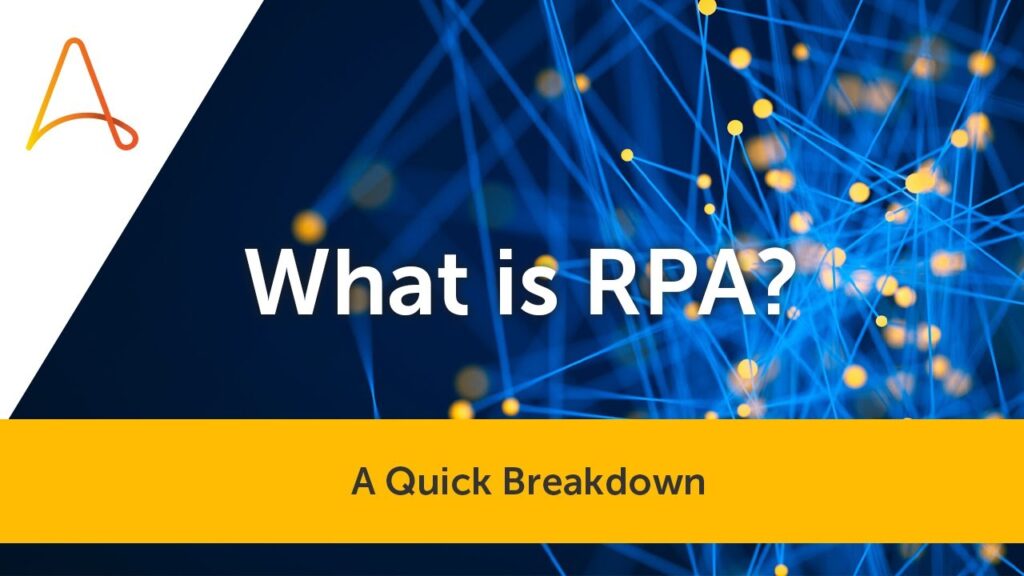What is Robotic Process Automation, RPA?
In today’s fast-paced digital world, efficiency and automation are essential for businesses to thrive. This is where Robotic Process Automation, or RPA, comes into the picture. RPA is a powerful software that allows anyone, regardless of their technical background, to automate repetitive digital tasks and streamline their workflow. But what exactly is RPA, and how is it transforming the way businesses operate?
RPA, in its essence, is a technology that enables computer software, commonly known as robots or bots, to mimic human actions and interact with digital systems. These bots are programmed to follow predefined rules and workflows, just like a human user would. However, unlike humans, RPA bots can work tirelessly without breaks, making them incredibly reliable and efficient.
The concept behind RPA is not new. It stems from traditional workflow automation, where rule-based tasks were handled by software solutions. However, RPA takes this concept to the next level by offering a user-friendly interface that enables even non-technical individuals to automate complex processes. This democratization of automation has made RPA increasingly popular across industries and sectors.
One of the key benefits of RPA is its ability to integrate seamlessly with existing systems and applications. Whether you’re using legacy systems, cloud-based platforms, or a combination of both, RPA can bridge the gap and automate processes across multiple systems. This makes it a versatile solution that can be customized to suit the specific needs of different organizations.
Automation Anywhere, a leading provider of RPA software, describes RPA as the “digital workforce of the future.” By utilizing RPA, businesses can free up their human workforce from mundane and repetitive tasks, allowing them to focus on more creative and value-adding activities. RPA bots can perform a wide range of tasks, such as data entry, data extraction, report generation, and even complex decision-making processes.
One of the most notable features of RPA is its ability to interact with various user interfaces, such as web browsers, desktop applications, and even virtual machines. This means that RPA bots can navigate through different systems and perform tasks just like a human user would, without the need for complex integrations or coding. As a result, RPA can be deployed quickly and easily, providing immediate value to organizations.
Implementing RPA can lead to significant cost savings and improved efficiency. By automating repetitive tasks, businesses can reduce human errors and minimize the need for manual intervention. This not only increases accuracy but also enhances compliance with regulatory requirements. Additionally, RPA can operate 24/7, allowing organizations to achieve faster cycle times and meet tight deadlines.
Furthermore, RPA enables organizations to scale their operations without adding additional resources. As business volumes increase, RPA bots can be deployed to handle the additional workload, reducing the need for hiring and training new employees. This scalability and flexibility make RPA an ideal solution for businesses looking to optimize their operations in a rapidly changing environment.
However, like any technology, RPA also has its limitations. While it excels at structured and rule-based tasks, RPA may struggle with unstructured data or complex decision-making processes that require human judgment. Additionally, continuous monitoring and maintenance are essential to ensure the smooth operation of RPA bots and to identify any potential issues or deviations from predefined rules.
In conclusion, Robotic Process Automation, or RPA, is revolutionizing the way businesses operate by automating digital tasks and streamlining workflows. With its user-friendly interface and versatility, RPA empowers organizations to unlock new levels of productivity, efficiency, and cost savings. As technology continues to advance, RPA is set to become an integral part of the digital workforce, helping organizations stay ahead of the competition and adapt to an ever-changing business landscape.
References:
[1] Automation Anywhere. “What is RPA (Robotic Process Automation)? | Automation Anywhere.” YouTube. https://www.youtube.com/watch?v=3GyQoe34h-Y
Industrial Robot
Introduction to Robotic Process Automation: Simplified Explanation of RPA’s Functionality and Benefits in 15-35 Words


